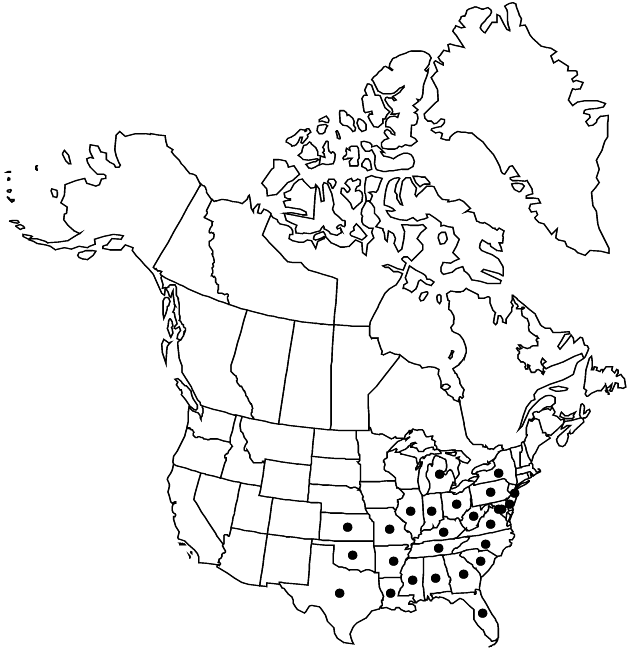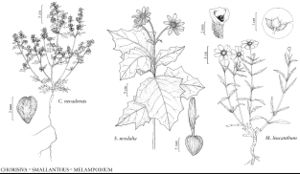Difference between revisions of "Smallanthus uvedalia"
Man. S.E. Fl., 1509. 1933.
Basionym: Osteospermum uvedalia Linnaeus Sp. Pl. 2: 923. 1753
Synonyms: Polymnia uvedalia (Linnaeus) Linnaeus Polymnia uvedalia var. densipilis S. F. Blake Polymnia uvedalia var. floridana S. F. Blake
Treatment appears in FNA Volume 21. Treatment on page 34.
FNA>Volume Importer |
FNA>Volume Importer |
||
| Line 7: | Line 7: | ||
|year=1933 | |year=1933 | ||
}} | }} | ||
| − | |basionyms={{Treatment/ID/ | + | |basionyms={{Treatment/ID/Basionym |
|name=Osteospermum uvedalia | |name=Osteospermum uvedalia | ||
|authority=Linnaeus | |authority=Linnaeus | ||
| + | |publication_title=Sp. Pl. | ||
| + | |publication_place=2: 923. 1753 | ||
}} | }} | ||
|synonyms={{Treatment/ID/Synonym | |synonyms={{Treatment/ID/Synonym | ||
| Line 59: | Line 61: | ||
|publication year=1933 | |publication year=1933 | ||
|special status= | |special status= | ||
| − | |source xml=https://jpend@bitbucket.org/aafc-mbb/fna-data-curation.git/src/ | + | |source xml=https://jpend@bitbucket.org/aafc-mbb/fna-data-curation.git/src/f6b125a955440c0872999024f038d74684f65921/coarse_grained_fna_xml/V19-20-21/V21_61.xml |
|tribe=Asteraceae tribe Heliantheae | |tribe=Asteraceae tribe Heliantheae | ||
|subtribe=Asteraceae (tribe Heliantheae) subtribe Melampodiinae | |subtribe=Asteraceae (tribe Heliantheae) subtribe Melampodiinae | ||
Revision as of 18:49, 24 September 2019
Leaves: petioles 3–12+ cm, blades 10–35(–60+) × 10–35+ cm, larger usually 3–5-lobed. Ray laminae 12–30+ mm. Cypselae 5–6 mm. 2n = 32.
Phenology: Flowering Jun–Aug(–Oct).
Habitat: Thickets, forest margins, often wet sites
Elevation: 10–300+ m
Distribution

Ala., Ark., Del., D.C., Fla., Ga., Ill., Ind., Kans., Ky., La., Md., Mich., Miss., Mo., N.J., N.Y., N.C., Ohio, Okla., Pa., S.C., Tenn., Tex., Va., W.Va., introduced in Bermuda.
Discussion
B. L. Turner (1988) included types of Smallanthus uvedalia and S. maculatus (Cavanilles) H. Robinson within a single species circumscription. If that circumscription is accepted, the range of S. uvedalia extends through eastern Mexico and Central America to Panama.
Selected References
None.
Lower Taxa
None.
